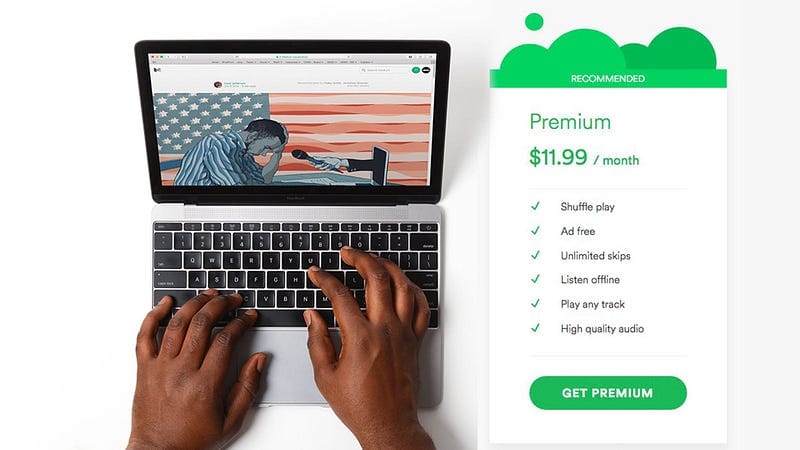What does a new business model look like for Medium?
It’s 2017 and Medium still doesn’t really know what it wants to be.

It’s 2017 and Medium still doesn’t really know what it wants to be.
Today the company announced layoffs for a third of its staff, leaving 50 people out in the cold for 2017. In a post on the Medium Blog CEO Ev Williams also announced that the VC-backed company would close its New York and Washington D.C. offices.
The reason? Medium wants to try a new business model. And if you just felt a little deja-vu about this message from Williams, know that you’re not alone.
When Medium first launched in 2012 the company promised that it would introduce “a new model” for publishing. 5 years later, while Medium may host more publishers and writers than it did in 2012, it still hasn’t figured out how to make money, unless you count traditional and native ad trials. Today the company is scrapping both revenue schemes and in the process has decided to sack a lot of staff in “sales, support, and other business function” departments of the company.
According to CEO Ev Williams:
in building out this [ad supported] model, we realized we didn’t yet have the right solution to the big question of driving payment for quality content. We had started scaling up the teams to sell and support products that were, at best, incremental improvements on the ad-driven publishing model, not the transformative model we were aiming for.
[…]
Upon further reflection, it’s clear that the broken system is ad-driven media on the internet. It simply doesn’t serve people. In fact, it’s not designed to. The vast majority of articles, videos, and other “content” we all consume on a daily basis is paid for — directly or indirectly — by corporations who are funding it in order to advance their goals. And it is measured, amplified, and rewarded based on its ability to do that. Period. As a result, we get…well, what we get. And it’s getting worse.
Just like every other company in media right now, Medium sees a problem with ad-supported, commoditised, targeted content but they can’t yet solve it. In his post announcing the layoffs Williams concludes that:
It is too soon to say exactly what [a new strategy] will look like. This strategy is more focused but also less proven. It will require time to get it right, as well as some different skills. Which is why we are taking these steps today and saying goodbye to many talented people.
Which made me wonder, what would an ad-free model look like at Medium, a model which presumably would also exclude native or promoted posts?
Unless the company has a magical new model hidden up its sleeve it’s safe to assume that Medium may have to make money by directly charging users for content.
Medium has already tested a subscription model in this vein through its ‘Memberships for Publishers’ beta program last year.

In that program, announced in April 2016, select Medium publishers were given the opportunity to lock off specific sets of content to paid members in order to, as it was described at the time:
fund important journalism or [provide] them with access to an exclusive series. You can choose to lock a single post, a weekly newsletter, a particular vertical or your entire publication.
You can see what this looks like in practice here:
Yet while this model works for publishers, a per-publication subscription model still doesn’t really make sense at scale. It forces users to consciously subscribe to particular publishers at a time where publishers are less important than ever before. For a publisher to actually convince a user to subscribe they must offer a unique style of content that cannot be found anywhere else. Again, in a commoditised media landscape this may seem fair, though platform owners like Facebook, YouTube and Medium have dedicated a significant amount of time to building a level playing field for publishers and users. On YouTube a single user, like PewDiePie, can have more subscribers than a VC-backed publication like Polygon or Kotaku. And even on Medium this post looks almost identical to any other user post. That’s despite the fact that this is a post on a Medium-independent publication called Gloss. Because of Medium’s attempts to dilute publisher branding through its one-size-fits-all post design, the idea of moving towards a publisher-focused business model would require much broader changes to Medium itself. The homepage of Medium.com, for example, would show premium content alongside free Medium user content, a contrast that users may not understand or care for. Would Medium promote premium content or force publishers to self-promote?
In today’s letter Williams notes that a new business model should allow writers to be:
rewarded on their ability to enlighten and inform, not simply their ability to attract a few seconds of attention.
If Medium wants to move away from traditional media business ideas perhaps it will continue to expand its Memberships program to the entire Medium site?
Imagine a YouTube Red style service that would allow individuals and publishers to make money from their content. An individual could become the PewDiePie of Medium, while Medium could take a cut to keep the lights on. Free trials would allow readers to taste-test content across the site without committing to a single publication, while the subscription model means readers don’t have to think about the value of each article or publication they read. A pay-per-article model, for example, would seem dated, especially considering the decline of a similar model on the iTunes and App Stores.
If Medium eventually found a large base of subscribers the $11.99 a month (or more/less) subscription model could bring in some money for popular posts or posts that Medium curates. Perhaps the subscription could even just be opt-in, or it could be a way for Medium to justify commissioning and publishing long-form features like an editor for a website would. Maybe Medium could pay a high-profile writer to produce a magazine-length piece that is then locked behind a Medium Premium subscription.
I’m just spitballing here, but so is, it seems, Medium. The company has today ditched its original business model, and the default business model for digital media, in favour of…something that it won’t yet talk about.
Today the company returns to its original veil of mystery, and the company probably won’t get a third chance to shake things up.


